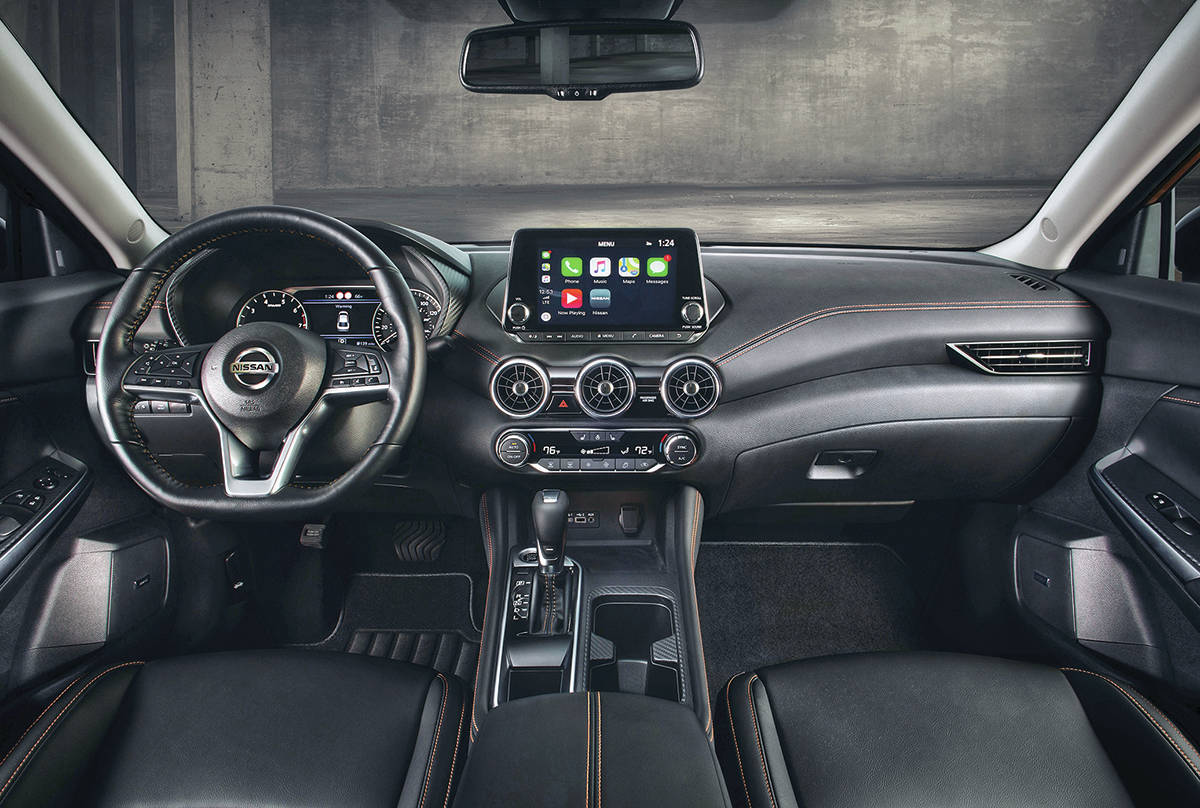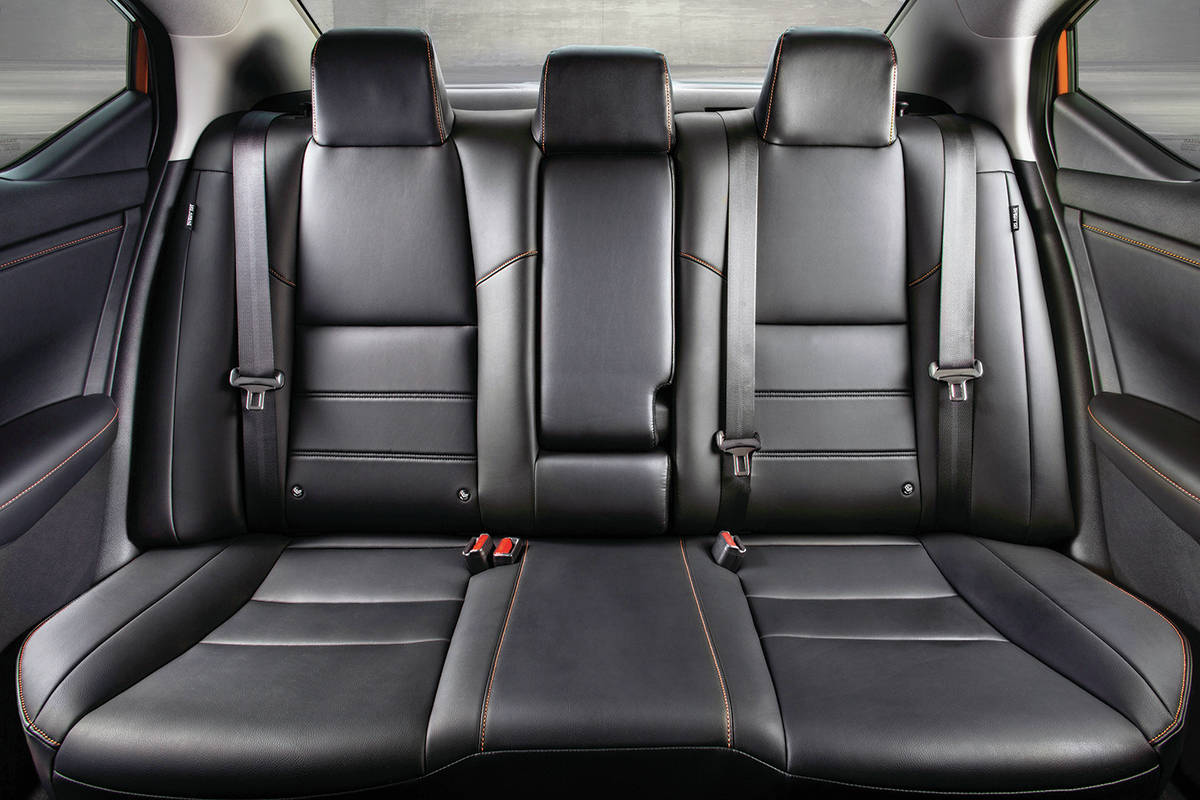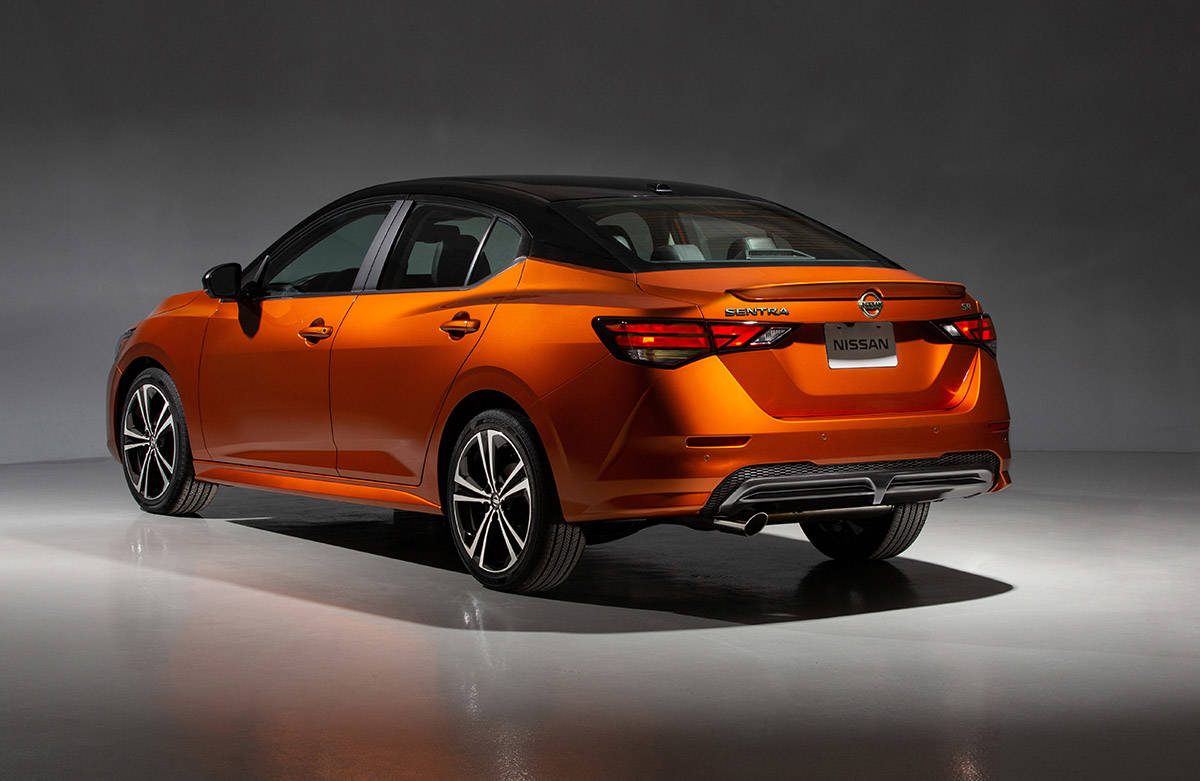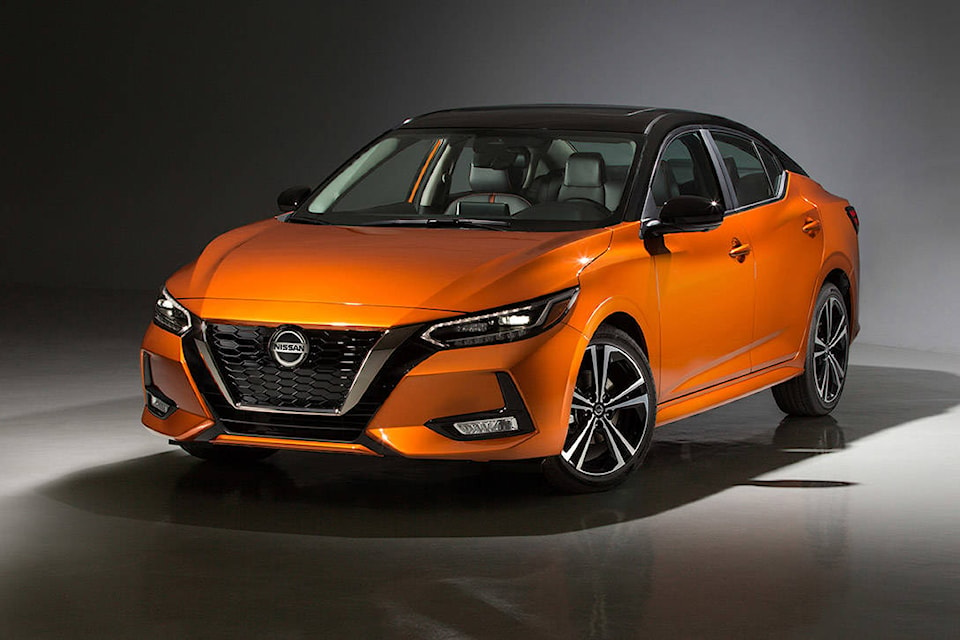Although buyers are hungry for utility vehicles, Nissan hasn’t neglected its small and midsize four-door car models, including the Sentra.
First introduced for the 1991 model year, the Sentra has been a bright spot on Nissan’s sales ledger: More than six million of the compact sedans have been sold worldwide. The latest edition that’s now on sale, is totally new from the ground up in a concerted effort to keep pace with the class-leading Toyota Corolla, Honda Civic and Hyundai Elantra.
Compared with the previous Sentra’s bodywork, there really is no comparison. The design is leaner and more stylish, with an enlarged signature V-shaped grille, more prominent hood and fender creases and a tapered “floating” roofline that elegantly blends into the trunk.
Although only slightly longer and with more space between the front and rear wheels, the Sentra’s width has increased by about five centimetres and the roof has been lowered by about the same. Combined with the new bodywork, the effect is a more substantial and sportier-looking sedan with a lower centre of gravity. The new Sentra could pass for its midsize Altima sibling.

The Sentra’s interior is as fresh as the exterior, with a flat-bottom steering wheel, seven- or eight-inch touch-screens (depending on the trim) and a 4.2-inch display between the speedometer and tachometer. There are also Zero Gravity posture-assist front seats that the automaker has installed in many of its other vehicles. They are designed to provide more back support, which helps reduce fatigue on long trips. From experience, they are effective.
Nissan has also added more sound deadening and improved the door and window seals.
The biggest complaint about the previous-gen Sentra was a lack of any kind of get-up-and-go, an issue that has been rectified for 2020. A 2.0-litre four-cylinder, which makes 149 horsepower and 146 pound-feet of torque, replaces the 1.8-litre four-cylinder (124 h.p. and 125 pound-feet).
The engine is linked to a six-speed manual transmission (base model only) or a continuously variable unit (CVT) with built-in steps that simulate the driving characteristics of a conventional automatic.
Fuel economy for the CVT-equipped Sentra is 8.0 city/6.0 highway and 7.1 combined (9.4/6.4/8.0 with the manual gearbox).

Underpinning it all is a new platform that Nissan says is more rigid than before. The previous torsion-beam rear suspension has also been replaced by a multi-link independent setup to improve the ride and driving characteristics, especially during cornering.
Pricing begins at $20,500 for the base S trim, which includes Nissan’s Safety Shield 360 grouping that bundles technology such as blind-spot warning and forward and reverse emergency braking. The only omission to that collection is Intelligent Cruise control, which maintains a set distance from the vehicle in front.
The mid-grade SV gets that along with dual-zone climate control, upgraded cloth interior and 16-inch alloy wheels. Wheel covers and steel wheels are standard. Other SV content includes heated front seats and outside mirrors, plus an Around View monitor that gives the driver a 360-degree view of his or her surroundings.
At the top end, the SR gets LED headlights, running lights and fog lights, as well as a darkened grille and outside mirrors, a rear spoiler, extra body garnish and 18-inch wheels. Leather-covered seats are optional for the SR.
It appears that Nissan has gone to great lengths to create a competent compact sedan that’s head and shoulders above its predecessor. Will that be enough to meet or upstage the top competitors in its class? Or the small utility vehicles that buyers seem to want? Those would be lofty goals, but taken on its own, the new Sentra leaves little on the table.

What you should know: 2020 Nissan Sentra
Type: Four-door, front-wheel-drive compact sedan
Engine (h.p.): 2.0-litre DOHC I-4 (149)
Transmission: Continuously variable
Market position: With virtually every domestic-based automaker having abandoned the compact-sedan category, the market has been left to vehicles such as the Sentra and the dominant Honda Civic and Toyota Corolla.
Points: New sheetmetal is a drastic improvement. • Interior makeover leans on the premium side. • More powerful four-cylinder engine was long overdue. • Wide assortment of active-safety tech is standard. • Returning the NISMO model to the lineup would help create some much-needed performance cred to the brand.
Active Safety: Blind-spot warning with cross-traffic backup alert (std.); active cruise control (opt.); front and rear emergency braking (std.); inattentive-driver alert (std.); lane-departure warning (std.)
L/100 km (city/hwy): 8.0/6.0 (CVT) Base price (incl. destination): $20,500
Toyota Corolla sedan
- Base price: $20,800
- Redesigned car is also available in hatchback and hybrid versions.
Honda Civic sedan
- Base price: $21,700
- Exceptionally roomy, it can be had in sedan, coupe and hatchback body styles.
Kia Forte
- Base price: $19,450
- A well-priced and well-equipped small car. A 201-h.p. turbo I-4 is optional.
– written by Malcolm Gunn, Managing Partner at Wheelbase Media



